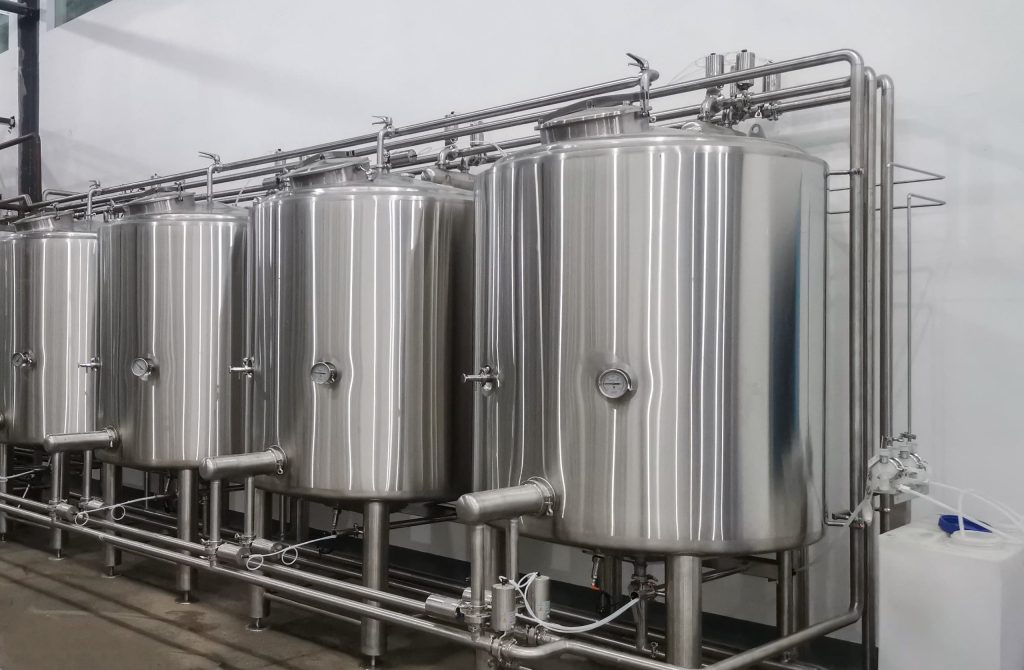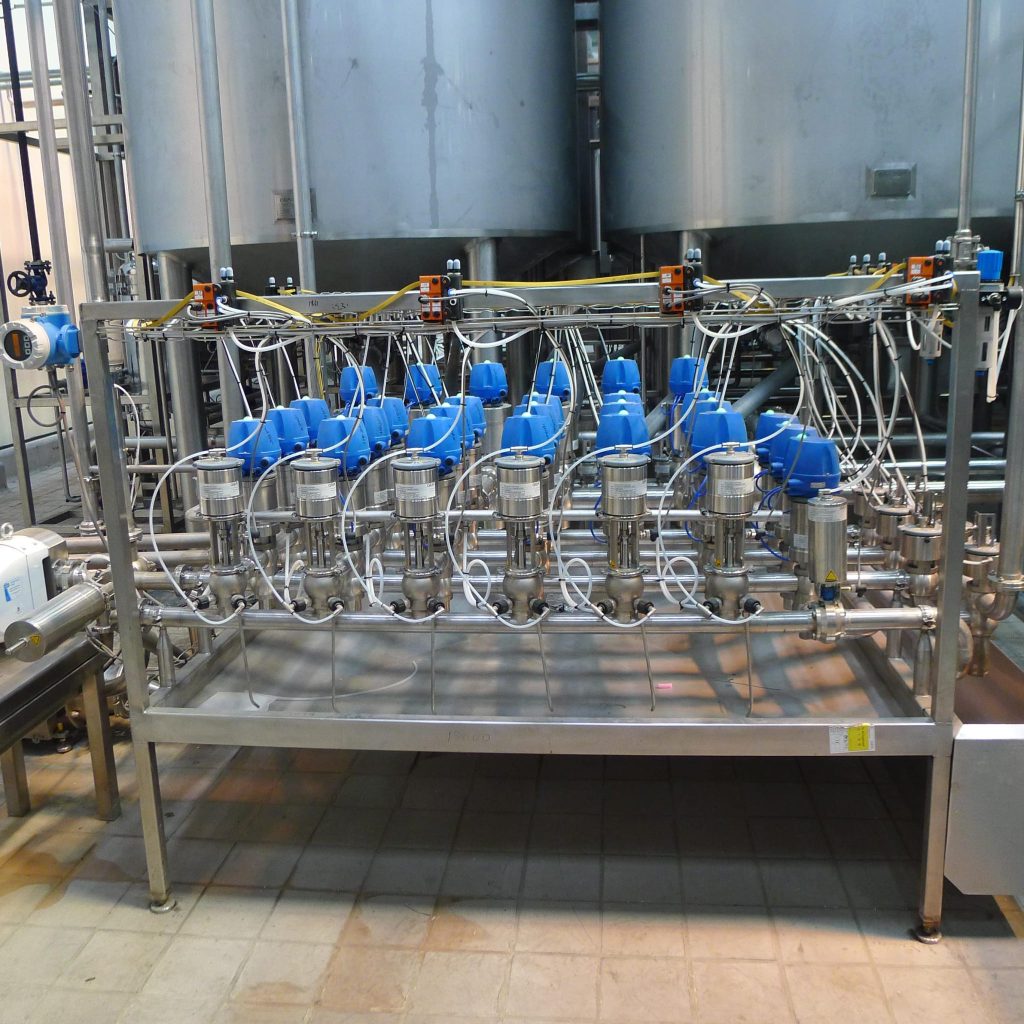Introduction

In the realm of industrial operations, maintaining impeccable cleanliness isn’t just a best practice—it’s often a regulatory requirement and a critical factor in ensuring product quality and safety. At the heart of many hygiene protocols lies the Clean In Place (CIP) tank system. This blog delves into the multifaceted importance of CIP tanks, exploring their functionality, benefits, implementation strategies, and the industries they serve.
What are Clean In Place Tanks?
Clean In Place (CIP) tanks are integral components in industries where stringent sanitation standards are non-negotiable. These specialized vessels allow for the automated cleaning of equipment and piping systems without the need for disassembly. They play a pivotal role in sectors such as food and beverage, pharmaceuticals, and biotechnology, where maintaining sterile conditions is paramount to preventing contamination and ensuring product integrity.
Importance of Clean In Place Tanks
Ensuring Hygiene Compliance
One of the foremost reasons for utilizing CIP tanks is their ability to uphold strict hygiene standards. In industries like pharmaceutical manufacturing or dairy processing, even the slightest contamination can lead to costly product recalls or compromised consumer safety. CIP systems mitigate these risks by providing thorough and consistent cleaning that meets regulatory requirements.
Operational Efficiency
Beyond compliance, CIP tanks contribute significantly to operational efficiency. By automating the cleaning process, these systems minimize downtime associated with manual cleaning procedures. This not only increases productivity but also allows for more frequent and efficient use of equipment, optimizing overall operational output.
Cost Effectiveness
While the initial investment in CIP tanks may seem substantial, their long-term benefits in terms of cost savings are undeniable. By reducing labor costs associated with manual cleaning and optimizing the use of water and cleaning agents, CIP systems offer a compelling return on investment over time. Moreover, they contribute to sustainability efforts by conserving resources and minimizing waste.
How Clean In Place Tanks Work
CIP tanks operate through a carefully orchestrated series of cleaning cycles. These cycles involve the circulation of specialized cleaning solutions—often at elevated temperatures and pressures—through equipment and pipelines. This process effectively dislodges and removes residues, microbes, and other contaminants from surfaces, ensuring a thorough and uniform clean.
Advantages of Clean In Place Tanks
Time Savings
Compared to traditional cleaning methods that require equipment disassembly and manual scrubbing, CIP tanks save considerable time. Automated cleaning cycles can be programmed and executed swiftly, allowing for more efficient turnaround between production runs.
Consistent Cleaning Results
The automated nature of CIP systems ensures consistency in cleaning outcomes. Each cycle is precisely controlled, minimizing variability and enhancing the reproducibility of cleaning processes. This consistency is crucial in industries where product quality and safety are paramount.
Sustainability Benefits
In addition to operational benefits, CIP tanks contribute to environmental sustainability. By optimizing the use of water, energy, and cleaning agents, these systems reduce overall resource consumption and minimize wastewater generation. This aligns with global initiatives to promote greener manufacturing practices.
Implementation Best Practices
Design Considerations
The effectiveness of a CIP system hinges largely on its design. Factors such as tank material, sizing, and configuration must be carefully considered to ensure compatibility with the specific cleaning requirements of the facility. Stainless steel, for instance, is a common choice due to its durability and resistance to corrosion.
Monitoring and Validation
Regular monitoring and validation of CIP processes are essential to ensure that cleaning objectives are consistently met. Parameters such as temperature, flow rates, and chemical concentrations should be monitored closely to maintain optimal cleaning performance and compliance with regulatory standards.
Training and Maintenance
Proper training of personnel is critical for the successful implementation of CIP systems. Operators should be well-versed in operating procedures, safety protocols, and troubleshooting techniques. Additionally, adherence to routine maintenance schedules—such as equipment inspections and calibration—is crucial to prolonging the lifespan of CIP tanks and ensuring their continued effectiveness.
Case Studies and Examples
Case Study: Food and Beverage Industry

Comparison of CIP Tanks in Food Processing
| Parameter | Traditional Cleaning | CIP Tank Cleaning |
|---|---|---|
| Cleaning Time (hours) | 6 | 2 |
| Labor Cost Reduction (%) | 30 | 70 |
| Water Usage (gallons) | 1000 | 500 |
In the food processing industry, CIP tanks have revolutionized hygiene practices by significantly reducing cleaning time and labor costs while conserving water resources.
Conclusion
Clean In Place tanks represent a cornerstone of modern industrial hygiene practices, offering a robust solution for maintaining cleanliness, efficiency, and compliance across various sectors. By automating and optimizing the cleaning process, these systems not only enhance operational efficiency and reduce costs but also uphold stringent hygiene standards essential for consumer safety and product quality.
FAQ
Q: What industries benefit most from Clean In Place tanks?
A: Clean In Place tanks are particularly beneficial in industries such as food and beverage, pharmaceuticals, and biotechnology, where hygiene and sanitation are critical.
Q: How can I optimize the performance of a Clean In Place tank system?
A: Optimal performance of a CIP tank system can be achieved through proper design, regular maintenance, and adherence to recommended cleaning protocols.
Q: Are there regulatory standards for Clean In Place tank systems?
A: Yes, various regulatory bodies enforce standards to ensure proper sanitation and safety in industrial processes, necessitating compliance with specific cleaning protocols.

